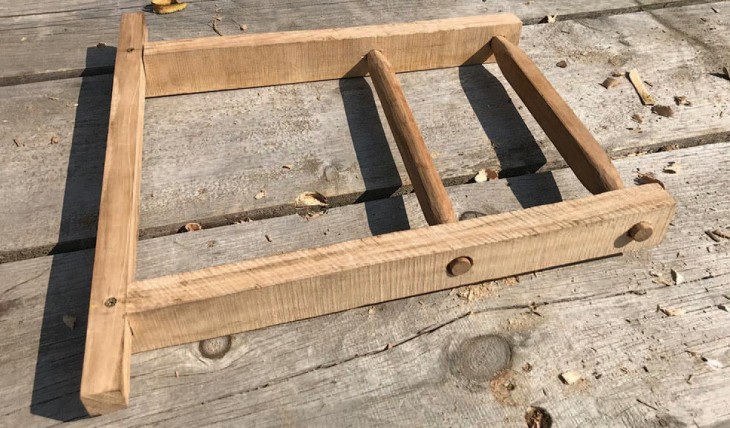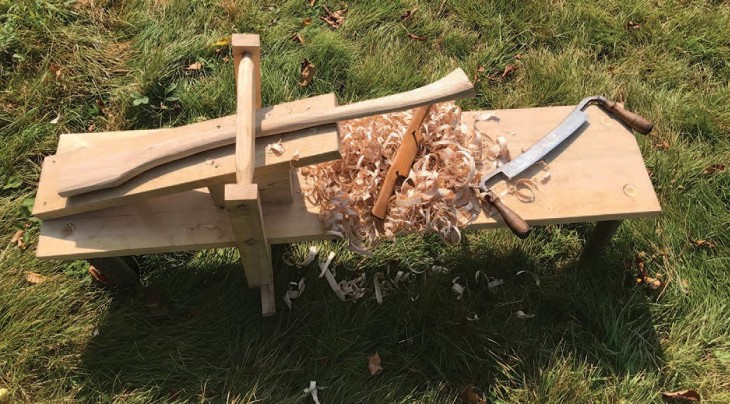Woodland bodgers were the itinerant greenwood craftsmen of western Europe who moved around the forest in search of good stock for making furniture. Their forest office provided coppice wood for chair legs and spindles that would be made on-site with the help of a shavehorse. The shavehorse served as both the workbench and vise, and was fashioned entirely from materials found in the forest.
Despite the Old World roots of the shavehorse, it remains one of my most useful tools for crafting goods from the woods. Your feet control the vise clamp (called the horse, dog, or dumb), which leaves both hands free to use a drawshave or its smaller cousin, the spokeshave. Releasing pressure with your feet is faster than unscrewing a vise and allows the work piece to be turned quickly.
For this project, I went with a simple design that appears to have its roots in rural France. It was made entirely from a 5/4-inch-by-10-inch-by-8-foot slab of hard maple, with black cherry saplings for legs. A shavehorse must fit the user, so I’ll refrain from prescriptive dimensions and instead focus on the design concept.
The seat should be wide enough that it’s comfortable and doesn’t leave you feeling as if you’ve ridden an actual horse. I retained the full 10-inch width for this shavehorse, although some folks opt to make the seat hourglass shaped so that it’s narrower in the center. Many traditional shavehorses use split (rived) logs for the seat portion, which adds some mass to the shavehorse and prevents it from galloping around during work.
The horse in this design is a rung style, where the spindles were sawn from the slab of hard maple, then rounded using a drawknife. The top rung clamps the work, the middle rung forms the pivot, and the bottom rung serves as the foot board that’s used to clamp the work.
The incline can be made to favor specific types of work. In my case, this shavehorse will be used primarily for axe handles. An incline length of 18 inches was used with a 5-inch rise. The pivot can be made of threaded rod, or a more traditional wood spindle that is free of knots and other defects.
The legs can be tenoned with a carving axe or drawshave to fit the 1½-inch seat holes. Height is a matter of personal preference. I prefer a lower shavehorse, as I prefer to be more recumbent in my posture and like the stability that comes from a low center of gravity.





